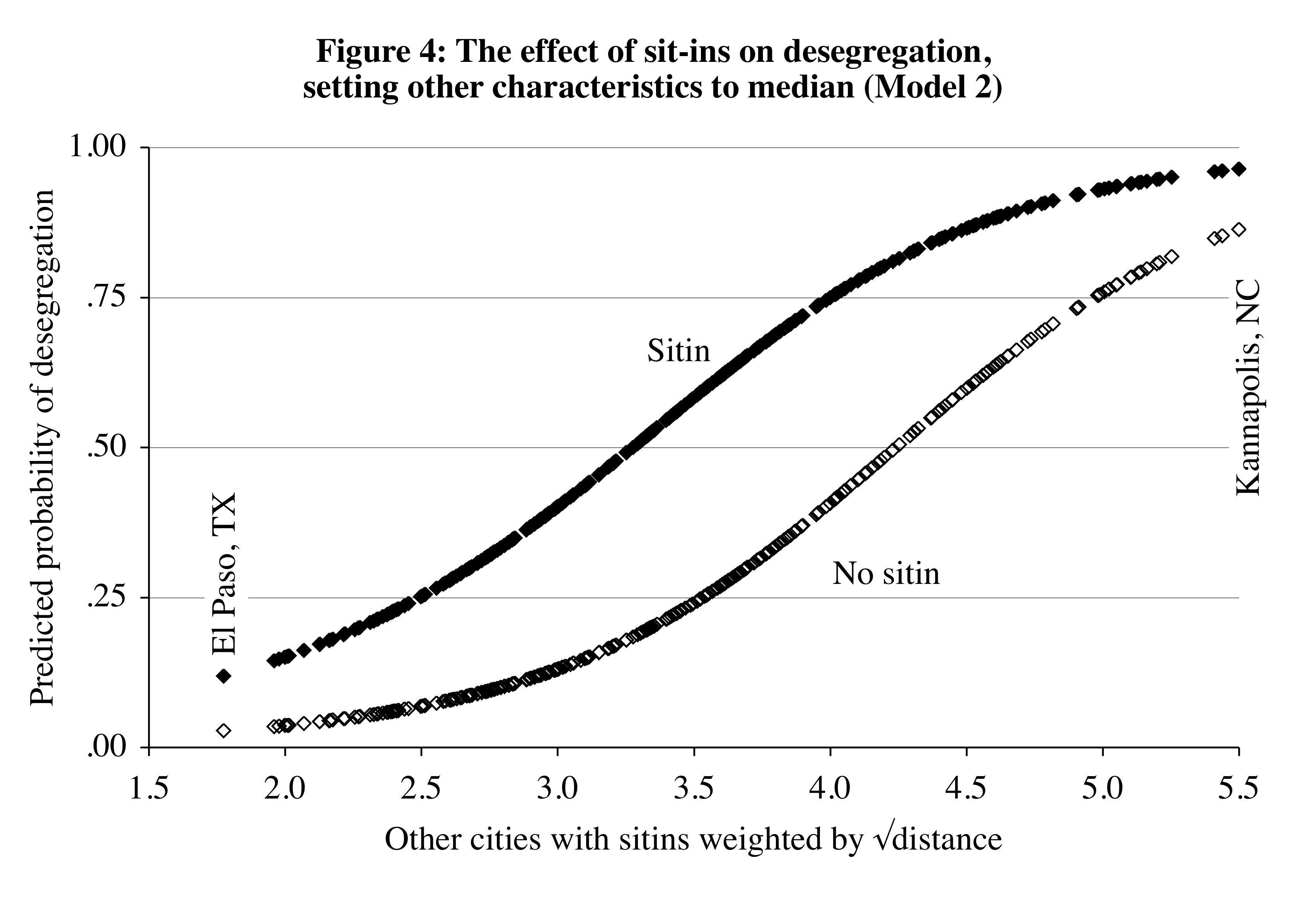
Protest Campaigns and Movement Success: Desegregating the U.S. South in the Early 1960s
Michael Biggs and Kenneth T. Andrews
American Sociological Review, vol. 80, no. 2, 2015, pp. 416-43; DOI 10.1177/0003122415574328

Can protest bring about social change? Although scholarship on the consequences of social movements has grown dramatically, our understanding of protest influence is limited; several recent studies have failed to detect any positive effect. We investigate sit-in protest by black college students in the U.S. South in 1960, which targeted segregated lunch counters. An original dataset of 334 cities enables us to assess the effect of protest while considering the factors that generate protest itself—including local movement infrastructure, supportive political environments, and favorable economic conditions. We find that sit-in protest greatly increased the probability of desegregation, as did protest in nearby cities. Over time, desegregation in one city raised the probability of desegregation nearby. In addition, desegregation tended to occur where opposition was weak, political conditions were favorable, and the movement's constituency had economic leverage.
Michael Biggs, Department of Sociology, University of Oxford